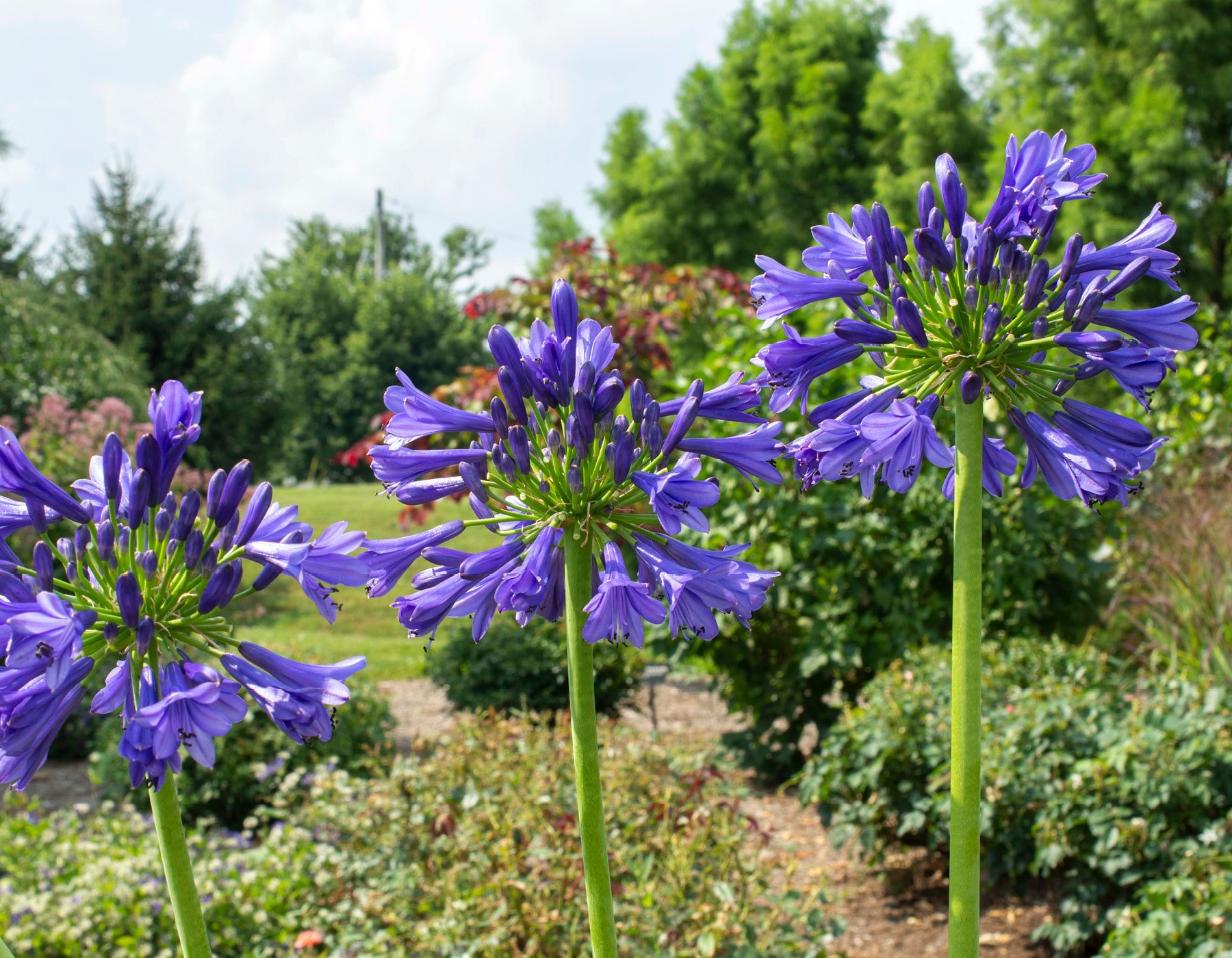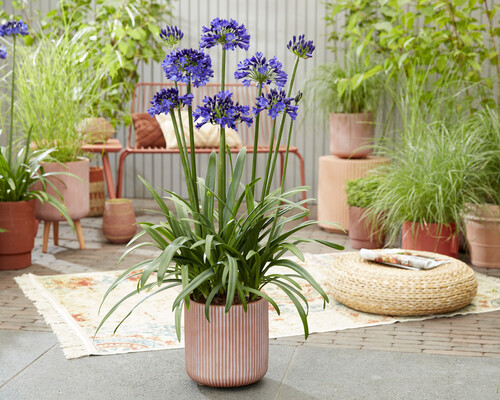Spectacular Agapanthus: Enhancing Your Garden's Beauty
Spectacular Agapanthus: Enhancing Your Garden's Beauty
Blog Article
Unleashing the Secret to Effective Agapanthus Farming: Advice for a Flourishing Garden
In the realm of horticulture, cultivating agapanthus successfully needs a tactical technique that incorporates various facets of plant care. With careful focus to detail, one can open the tricks to nurturing these spectacular blooms, leading to a yard that thrives with beauty and vibrancy. By recognizing the subtleties of agapanthus growing, one can develop a setting where these plants flourish and flower abundantly. In the complying with conversation, we will check out crucial ideas and techniques that will lead you in the direction of a prospering agapanthus garden, offering insights right into ideal practices, soil problems, watering methods, and extra.
Growing Agapanthus: Best Practices
When planting Agapanthus, correct dirt preparation is necessary for making certain successful growth and growth of these gorgeous flowers. Agapanthus, generally called Lily of the Nile or African lily, prospers in well-draining soil with a slightly acidic to neutral pH degree - Agapanthus. Before planting, it is vital to modify heavy clay dirts with organic issue such as garden compost or peat moss to boost water drainage and give necessary nutrients for the plants
To plant Agapanthus, select an area that gets complete sunlight to partial shade, as this will promote healthy and balanced growth and bountiful flowering. Dig a hole twice the size of the plant's root sphere and put the Agapanthus at the exact same deepness it was previously expanding. Delicately backfill the opening with dirt, pushing down firmly to remove any kind of air pockets around the origins.
Water the freshly grown Agapanthus thoroughly and remain to maintain the dirt equally moist, specifically throughout the plant's active expanding period. Agapanthus. Applying a well balanced fertilizer once a month can better support the plant's growth and blooming. By adhering to these ideal practices for growing Agapanthus, you can create a spectacular screen of these captivating blossoms in your yard
Suitable Soil Conditions for Agapanthus
For optimal growth and flowering success of Agapanthus plants, guaranteeing the soil problems are suitable is crucial. Agapanthus favors dirt that is abundant in nutrients, so integrating a well balanced plant food during the growing period can promote healthy growth and vibrant blooms.

Watering and Fertilizing Tips
To ensure healthy growth and dynamic blossoms, correct watering and feeding strategies are essential for successful Agapanthus cultivation. Agapanthus plants take advantage of regular watering, particularly throughout the expanding season. It is suggested to water deeply when a week, making sure the dirt is damp but not waterlogged. Throughout warm weather condition or in pots, even more frequent watering may be necessary to avoid the dirt from drying entirely.
When it pertains to fertilizing Agapanthus, a balanced plant food with equivalent components nitrogen, phosphorus, and potassium can be applied in the spring to additional info advertise healthy and balanced development and flowering. Slow-release fertilizers are ideal for giving nutrients gradually over an extensive period. Prevent over-fertilizing, as this can cause excessive foliage development at the expense of blooms.
In addition, integrating natural matter like garden compost into the dirt can enhance nutrient degrees and improve dirt structure, aiding in the total health and wellness of the Agapanthus plants. By following these watering and feeding tips, garden enthusiasts can ensure their Agapanthus plants prosper and produce magnificent screens of flowers.
Pruning and Deadheading Strategies
Correct pruning and deadheading strategies play an essential duty in preserving the health and appearances of Agapanthus plants, complementing the essential methods of watering and fertilizing for successful cultivation. Pruning Agapanthus entails removing invested blossom heads, yellowing or dead leaves, and overall shaping of the plant to promote far better growth. Deadheading, the procedure of getting rid of discolored flowers, not only improves the plant's look however likewise urges further blooming.
When deadheading Agapanthus, it is a good idea to snip off the blossom stem at the base using sharp, tidy shears. This procedure reroutes the plant's energy from seed production back right into origin and vegetation growth, advertising a much healthier and much more durable plant. Routine deadheading can expand the blooming period of Agapanthus and stop self-seeding, which can result in congestion.
In terms of pruning, Agapanthus typically gain from a light trim after blossoming to clean up the plant and encourage fresh growth. Reducing the spent flower stems and removing any dead or broken vegetation assists preserve the plant's vigor and total appearance. However, it is vital to prevent cutting into the crown of the plant, as this can compromise its health.

Protecting Agapanthus From Vermins and Diseases
Executing efficient parasite and illness administration strategies is essential to safeguarding the wellness and vitality of Agapanthus plants in growing. Agapanthus are normally hardy plants, however they can still succumb to numerous insects and diseases otherwise appropriately taken care of. One common parasite that impacts Agapanthus is the Agapanthus borer, a caterpillar that tunnels right into the plant, triggering damages to the blossoms and leaves. To stop invasions, normal assessment of the plants is important. If borers are found, they can be manually gotten rid of, or insecticidal soap can be used as a control procedure.
In addition to pests, Agapanthus are prone to illness such as root rot and fungal leaf places. By staying attentive and dealing with insect and disease issues promptly, garden enthusiasts can aid their Agapanthus prosper and grow.

Final Thought
To conclude, successful farming of agapanthus requires appropriate growing strategies, optimal soil problems, appropriate watering and feeding, routine pruning and deadheading, and security from conditions and pests. By following these methods and suggestions, gardeners can make sure a flourishing garden loaded with lovely agapanthus blooms. Agapanthus. Bear in mind to preserve regular treatment and interest to detail to promote the health and wellness and long life of these stunning plants
When growing Agapanthus, correct dirt prep work is crucial for guaranteeing click now successful development and growth of these beautiful flowers.Water the freshly grown Agapanthus completely and proceed to maintain Learn More the dirt equally wet, specifically during the plant's active growing season.For ideal development and growing success of Agapanthus plants, guaranteeing the dirt conditions are perfect is important. When hair transplanting or growing Agapanthus, make certain the dirt is well-prepared to provide the required structure for the plants to develop themselves efficiently. One common insect that influences Agapanthus is the Agapanthus borer, a caterpillar that passages right into the plant, triggering damage to the flowers and leaves.
Report this page